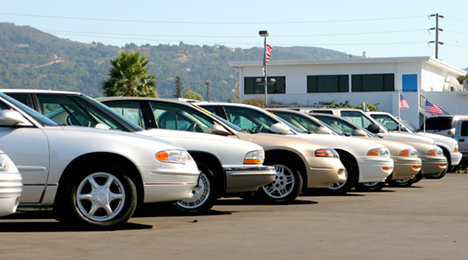Separate Study Reinforces NADA Stance on How Buyers Save

In what should be music to the ears of franchised store principles and industry leaders, a new study orchestrated by the Phoenix Center highlighted how much consumers benefit from the dealership system currently in place.
The study found consumers significantly benefit from "intrabrand" price competition for new vehicles — often in the hundreds of dollars per sale — proving dealers compete on price for the same make and model.
The Phoenix Center acknowledged vehicles are expensive, and most consumers know to shop among dealers for the best prices. Yet, the firm said that until this study there has been little to no empirical evidence on the price effects of intrabrand competition among different dealer franchises for the same model.
Using large samples of transactions for 10 of the most popular new vehicles purchased in Texas for the years 2011, 2012 and 2013, the Phoenix Center study estimated the effects of intrabrand competition on new-vehicle prices.
Authors explained intrabrand competition is measured as the distance (in miles) to the nearest same-brand dealer. Significantly, for all but one of the models, the Phoenix Center found that intra-brand competition does, in fact, lower new-vehicle prices for consumers.
For the popular Honda Accord, for example, increasing the distance between Honda dealerships by 30 miles raised the price paid by consumers by about $500.
Phoenix Center chief economist George Ford was co-author of the study titled, “The Price Effects of Intra-Brand Competition in the Automobile Industry: An Econometric Analysis.”
Ford said, “When two same-brand dealers compete for the business of a consumer on a car, the bargaining focuses mostly on price. The data shows that having multiple same-brand dealers in close proximity produces significant price cuts for the consumer. More auto dealers means lower consumer prices.”
The Phoenix Center acknowledged retail margins on vehicles sales are quite small, using an average of about 6 percent. In light of that metric, the study showed the price reductions resulting from intrabrand competition are substantial relative savings for new-vehicle consumers.
Moreover, the Phoenix Center found that the price effects of intrabrand competition are relatively strong compared to interbrand competition — at the sample means, moving an intrabrand dealer 1 mile closer reduces prices by the equivalent of an increase in 35 interbrand rivals.
“Laws exist in almost every state governing the retailing of new cars to consumers,” said study co-author and Phoenix Center president Lawrence Spiwak. “These laws have encouraged large dealer networks, which the evidence suggests have led to significantly lower prices for consumers.”
The Phoenix Center is a non-profit organization that studies broad public-policy issues related to governance, social and economic conditions, with a particular emphasis on the law and economics of the digital age.
This new study provides more material that backs a campaign started last June by the National Automobile Dealers Association
NADA rolled out a “Get The Facts” initiative to inform the media, opinion leaders and policymakers about the numerous benefits of America’s franchised dealer network through a website and variety of multimedia resources.
Last summer, the association also released its own report on the consumer benefits of the dealer franchise system.
“Franchised new-car dealers provide the best, most efficient and most cost-effective way to sell and distribute new cars in America, and we’re proud of our businesses and business model,” NADA president Peter Welch said.

 View The Latest Edition
View The Latest Edition

